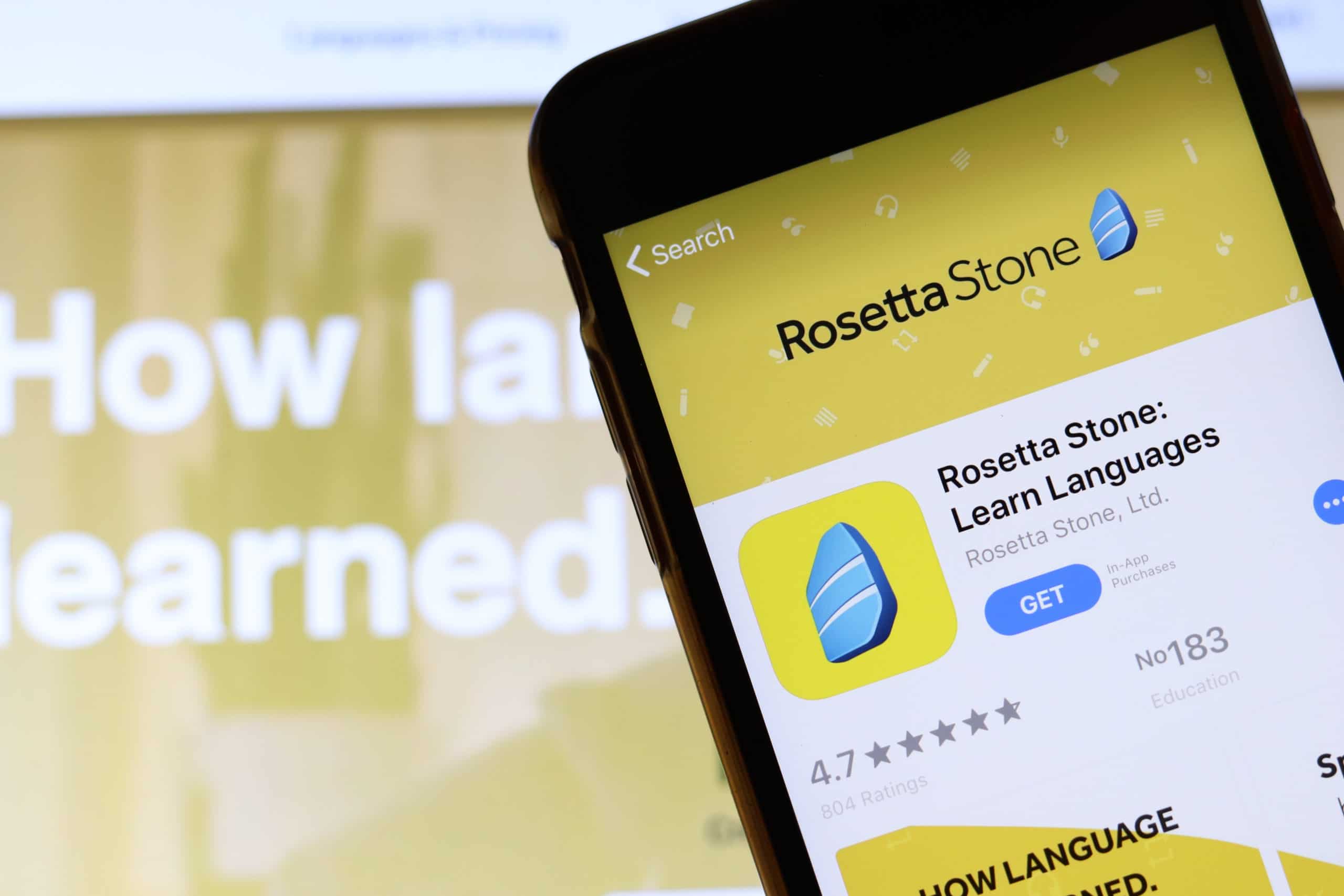It’s time. You’ve finally decided to begin your journey into learning a language. Whether you’re a complete newbie or a retired polyglot jumping back into the game, you have a decision to make: how will you do it? Theoretically, you could hop on the next redeye and immerse yourself into a new culture entirely. But if you’re like most people, you’ll probably turn to the Internet. There, you’ll find the vast world of language learning software.
This article from The Modern Language Journal details the many technologies employed in online language learning apps, concluding that there is an ever growing need for students to make the right decision in order to best achieve their goals. The good news is that we know how to evaluate apps for achieving fluency and we’re here to help!
Like every industry, there are some major players in the realm of online language learning. Among them are Rosetta Stone and Pimsleur, each program offering various attributes. The choices can be overwhelming, so we’ll give you a head start with this comprehensive review of what they have to offer.
Up first, Rosetta Stone
Love it or hate it, Rosetta Stone is an old pro. It’s been around since 1992, and has experienced the digital boom firsthand. What was once a CD-ROM (what a concept!) is now a widely touted language learning tool. But what you really want to know is, is it worth the hype? I tried out the 3-day free trial to see for myself.
The process
After you choose your language from the 24 options, you select your level and goal. In my case, I chose beginner (Brazilian) Portuguese and a goal of “basics and beyond.” In total, there are 12 units with various themes. Inside each unit are four lessons covering grammar, speaking and the like.
The format is repetitive, so you’ll have a lot of exposure to the same content. Whether it’s listening or speaking, you’re basically matching words to pictures. In the first lesson, I matched the words uma menina to a picture of a girl quite a bit. If you’ve got thirty minutes to spare each weekday, you’ll get the whole program done in about six weeks.
Okay, okay. Enough with the specs. What’s the verdict?
Let’s start with the good
Included with the units are free live tutoring classes, to which we give a thumbs up. After all, conversation is the cornerstone of fluency. Though, we would give two thumbs up if the 25-minute class was limited to one-on-one rather than the current group size of four.
The program can be affordable. A lifetime subscription is a one-time payment of $179, which is pretty standard for a language course.
What was lacking?
For starters, I duped the voice recognition software. Rather than repeating the phrase like instructed, I just mimicked the sounds with a hum or a mumble and received full points. Accuracy matters, especially in pronunciation.
The learning style is entirely passive. There’s not much effort involved on your part considering the principle read-and-repeat format. You can engage with the audio companion or the stories, but you can also just ignore those components entirely.
One language aficionado, Kris Broholm, pointed out in his review that the content is copied across languages, leaving cultural context and insight to the curb.
All in all?
You won’t leave empty handed after completing a RS subscription. There is a lot of subject matter, but there is also a crucial element of fluency missing: immersive conversation. I definitely picked up some useful phrases from the Portuguese lessons, but there was no experiential learning component to make a real impact. We believe that personalized and student-centered lessons will take you much farther. See for yourself and practice with an experienced Portuguese tutor.
Next in line, Pimsleur
Auditory learners, this one’s for you. And technically, we all learned our first language listening, so it’s a pretty great way to learn, seeing as it’s had a 100% success rate with first languages. Based on the scientific research of the late Dr. Paul Pimsleur, this program is all about active listening. Pimsleur offers over 50 languages, including some that are rarely offered such as Ojibwe, a threatened language of North America.
Older than Rosetta Stone, the Pimsleur Method™ has served students of language for nearly half a century. Let’s break it down.
What is the Pimsleur Method™?
At the center of this approach is Graduated Interval Recall, a method that reminds you of new words at gradually increasing time intervals. Forget flash cards, Pimsleur aims to introduce vocabulary in a natural and instinctive manner. Have some time? We think a book could also do the trick.
You’ll also encounter the concept of Principle of Anticipation, and we think it’s something Pimsleur excels at. Because you’re encouraged to interact and respond to the recording of a native speaker, this type of learning mimics actual conversation. This native speaker promise has been contested, though there are always trade-offs with convenience. After all, you can listen to the lessons anywhere.
These elements are put to use in constructive 30-minute audio files. But beware, they can cost a pretty penny.
How much are we talking?
The courses are taught in levels, with each level containing 30 lessons. Buy them in sections or all at once to save a bit of money. Each level is about 16 hours, with the most popular languages offering 4-5 levels. The price gradient is something like this:
- Lessons 1-5 for $21.95
- Level 1 (i.e. Lessons 1-30) for $119.95
- Levels 1-5 (i.e. Lessons 1-150) for $550.00
Insider tip: Be sure to check if your local public library already offers Pimsleur for free. Language acquisition won’t come easy, but it should remain accessible.
Something’s missing…
So there you have it, Rosetta Stone and Pimsleur are giants in the industry for a reason. They are both backed by decades of experience and research, homaged by their fair share of success.
Despite their many differences in methodology, they do have one thing in common… or rather, one thing they all lack: face-to-face time with a live teacher who is tailoring lessons just for you. Imagine becoming a piano player without ever touching a piano. Well it’s the same for language. How can you become conversational if you have never had a conversation? Matching games and audio clips can only take you so far, which you know far too well from that high school French class.
If you truly want to become fluent, an app is just a stepping stone in the journey, but can be a great supplement to face to face learning. The real progress begins when you can converse in real time with a native speaker that keeps you and your goals at the center of each session. At TruFluency, our teachers are vetted and equipped with the necessary tools in order to create customized lessons for helping you achieve your learning goals in exactly the way you need.
Language learning is personal, software isn’t. Sign up for your $35 trial lesson today and find the teacher that is right for you.





